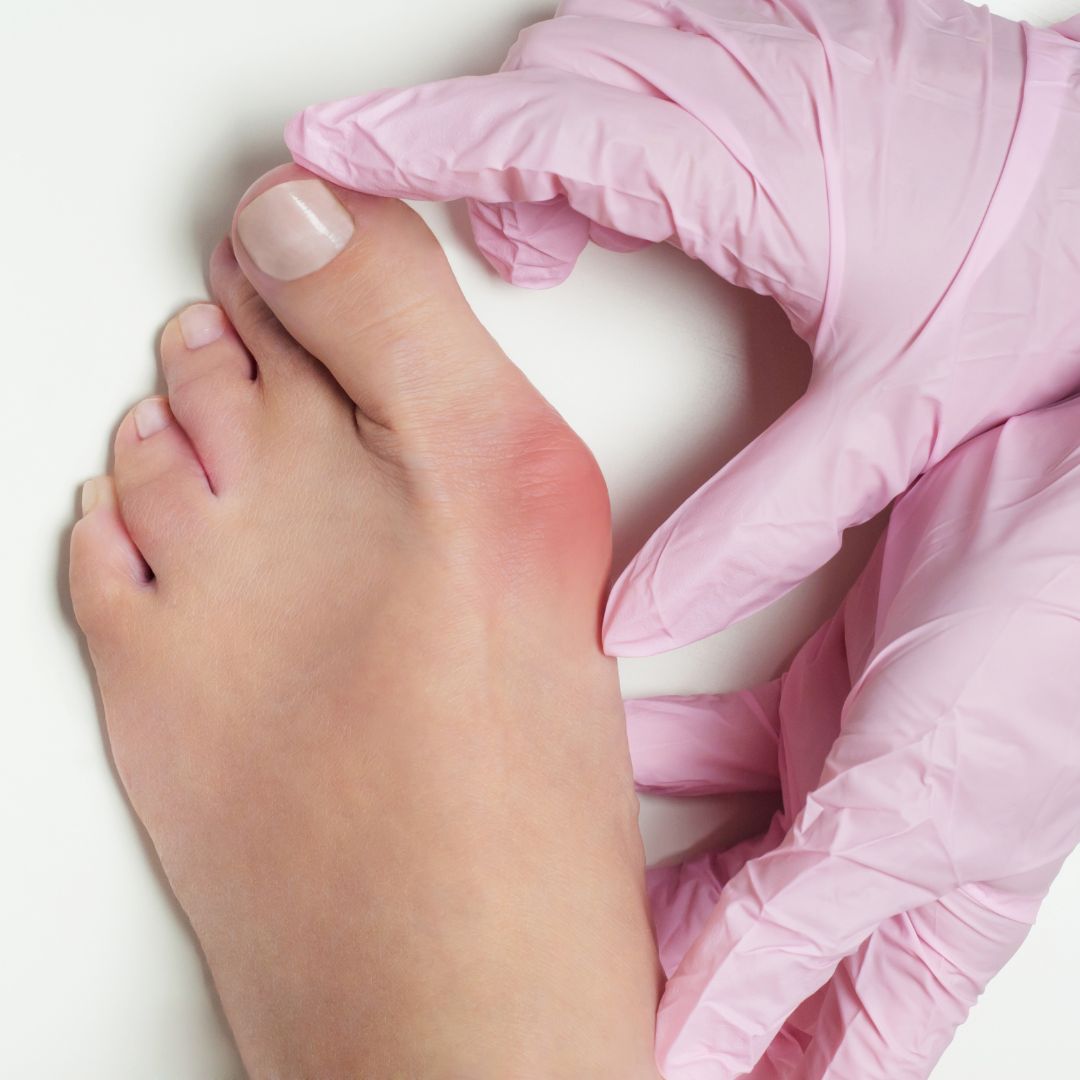Living with Bunions? Surgery Might Be the Solution You’re Looking For
Bunions can be more than just a cosmetic concern. They can cause significant pain, discomfort, and even interfere with your daily activities. If you’ve tried non-surgical treatments like padding, orthotics, or anti-inflammatory medications without success, bunion surgery might be your next step toward relief.
Dr. Brad Herbst helps explain why some patients need bunion surgery, what happens during the procedure, and the recovery process.
Why Might You Need Bunion Surgery?
While conservative treatments work for many, bunion surgery becomes necessary when:
- You experience persistent pain that interferes with walking or daily activities.
- Your bunion is causing deformities in your other toes, such as hammertoes or overlapping.
- Swelling or inflammation doesn’t subside, even with medication or rest.
- You have trouble finding comfortable footwear due to the size and severity of your bunion.
Bunion surgery aims to relieve pain, restore normal function to the foot, and prevent long-term damage caused by improper alignment of your toes.
Types of Bunion Surgery
Bunion surgery isn’t one-size-fits-all. Procedures depend on the severity of the condition and the patient’s specific needs. Here are some common types of bunion surgery:
- Osteotomy: The surgeon cuts and repositions the bones to correct alignment.
- Exostectomy: The removal of the bony bump on the joint while leaving the rest of the foot structure intact.
- Arthrodesis: A procedure done in severe cases, where the damaged joint is replaced with screws or plates.
- Implant Arthroplasty for Bunion Treatment: For individuals suffering from severe bunion pain or advanced joint damage, implant arthroplasty may be an effective solution. This procedure involves replacing the damaged joint with a metal or silicone implant, restoring function and relieving discomfort. Implant arthroplasty is particularly beneficial for patients who may not find relief through traditional bunionectomy procedures. Dr. Brad Herbst utilizes state-of-the-art techniques and materials to ensure the best possible outcomes for his patients. By replacing the joint, this approach can improve mobility, reduce pain, and enhance overall quality of life.
Dr. Herbst will consult with you and recommend the best approach for your unique case. It is important to note, most surgeries are full weight bearing after surgery.
What Happens During Bunion Surgery?
During bunion surgery, the goal is to realign the bones, ligaments, and tendons of your toe to restore its normal shape and relieve pain. Here’s what typically happens:
- Consultation and Evaluation: Before surgery, Dr. Herbst will review your medical history, take X-rays of your foot, and discuss the best surgical option for you.
- The Procedure: Most bunion surgeries are outpatient procedures, meaning you can go home the same day. They are typically performed under local anesthesia.
- Correction: Depending on the chosen method, Dr. Herbst will reshape the bones, adjust ligaments, or remove the excess bony bump.
The entire procedure may take around 1-2 hours. During this time, your surgeon ensures that the foot is properly aligned to reduce the risk of bunion recurrence.
What Is Recovery Like After Bunion Surgery?
Recovery is one of the most critical parts of the process, and how well you follow post-operative care significantly impacts your healing. Here’s what to expect during recovery:
- Immediate Post-Surgery: Your foot will be bandaged, and you’ll likely be asked to wear a surgical boot to protect your foot. Avoid putting weight on the affected foot unless instructed otherwise.
- First Few Weeks: Swelling and bruising are common. Ice packs and elevating your foot can help manage discomfort.
- Mobility Aids: You may need crutches or a walker for a few weeks to reduce strain on the foot.
- Physical Therapy: Your surgeon may recommend exercises or therapy to restore strength and flexibility in your foot.
- Full Recovery Timeline: Depending on the type of bunion surgery, it can take 6 weeks to several months for a full recovery. It’s essential to follow Dr. Herbst’s advice for follow-up visits and activity restrictions to ensure surgical success.
By the time you’ve completed the recovery process, you should notice significant improvements in pain levels and foot function.
Dr. Brad Herbst and his team are committed to supporting patients throughout the entire recovery phase. Every step of your healing process is carefully guided by expert care.
Why Choose Dr. Brad Herbst?
When it comes to bunion surgery, having a skilled and experienced podiatrist can make all the difference. Dr. Brad Herbst, of Podiatry Associates of Florida – San Jose Blvd. Division, is a board-certified podiatrist who specializes in foot and ankle surgeries. His patient-focused approach ensures that each individual receives a customized treatment plan tailored to their specific needs.
With years of expertise, advanced techniques, and a compassionate approach, Dr. Herbst is committed to helping you walk pain-free again and has decades of experience and patients who share their stories of successful surgeries and treatments.
Save Your Step—Schedule Your Consultation Today
Bunions shouldn’t hold you back. If you’re ready to take the next step toward pain relief and better mobility, schedule a consultation with Dr. Brad Herbst at Podiatry Associates of Florida.
Discover how bunion surgery can transform your life. Call 904-268-6993 to schedule your appointment.
Your path to pain-free living starts with expert care.

